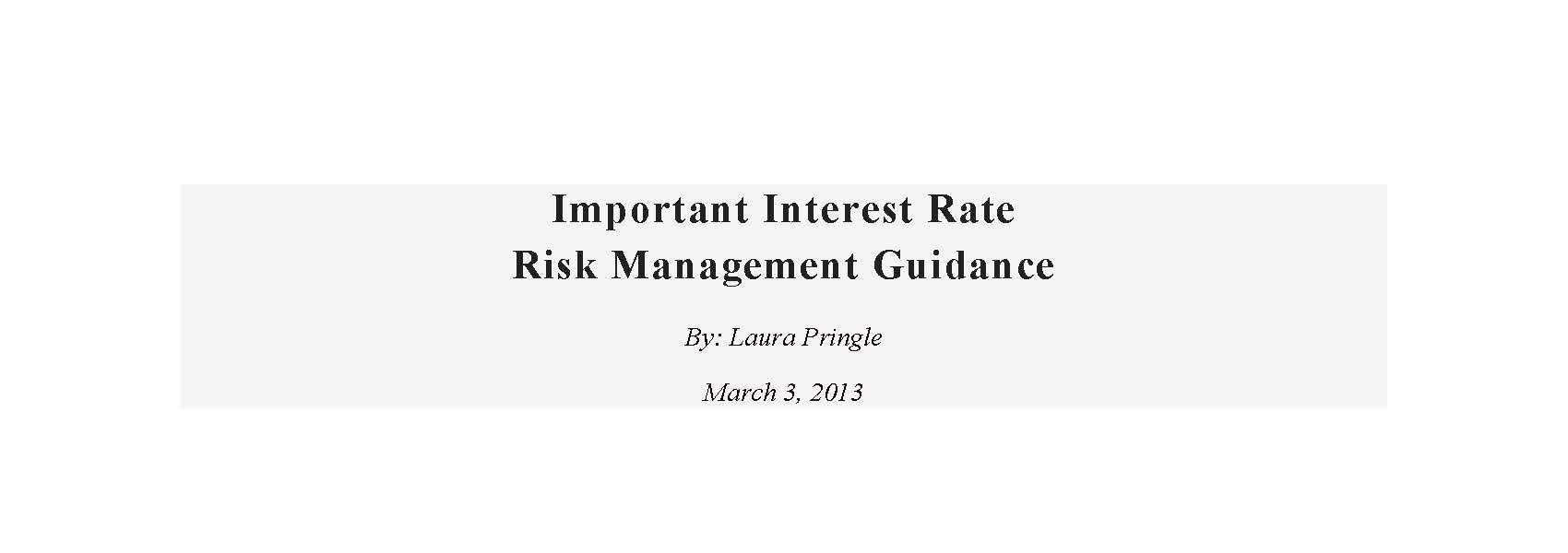Important Interest Rate Risk Management Guidance
By: Laura Pringle
March 3, 2013
Interest rate risk management continues to be of great concern to regulators and additional guidance has now been issued in the form of Frequently Asked Questions and Answers (“FAQs”). Most recently the Federal Financial Institutions Examination Council (“FFIEC”) released FAQs on January 12, 2012, to better explain the Interagency Advisory on Interest Rate Risk Management. The regulators restated their expectation that all supervised institutions will manage interest rate risk exposures using processes and systems commensurate with their complexity, business models, risk profiles, scope of operations and earnings and capital levels and the FAQs provide examples of risk management expectations for financial institutions of various interest rate risk profiles, including how to adjust processes as risks change.
In the March Updates to the PRINGLE Safety & Soundness Programs, these FAQs are set out in the form of a worksheet in an enhancement to the exhibit on Interest Rate Risk Management in the Policy addressing asset and liability management to help document considerations of the new FAQs prior to upcoming examinations.
Because models provided by third party vendors often are used by financial institutions, many of the FAQs address the issues to be considered in using those models. Remember also that separate and specific guidance is available on prudent model risk management policies, procedures, practices and standards which are included as an exhibit to the strategic corporate business plan policy and was provided in response to the issuance of the Supervisory Guidance on Model Risk Management. That Guidance was developed by the Office of the Comptroller of the Currency and the Federal Reserve and is directly applicable to all banks and savings institutions and other institutions for which the OCC is the primary supervisor and to all other institutions for which the Federal Reserve is the primary supervisor. It is also helpful guidance for all other financial institutions.
These FAQs also provide helpful discussions of stress testing. For instance, in specifically suggesting at least a +400 basis point shock as a meaningful stress scenario in a period of extremely low rates, increasing the number of positive rate shocks is discussed as well as the requirement to establish board-approved limits, triggers or thresholds for monitoring each stress scenario. Another helpful discussion includes the need to have scenarios run a “no growth” assumption, rather than always assuming that new loans will be made at higher interest rates, and those “no growth” scenarios should also be well documented.
The underlying requirements in the Interagency Advisory on Interest Rate Risk Management are also discussed in an article titled, “Liquidity and Interest Rate Risk Planning” from 4/14/2010, which can be found on the WKFS Compliance Headquarters Web site.
©PRINGLE® 2013
This Article was also published at Wolters Kluwer’s Compliance Headquarters™ website: www.complianceheadquarters.com.
